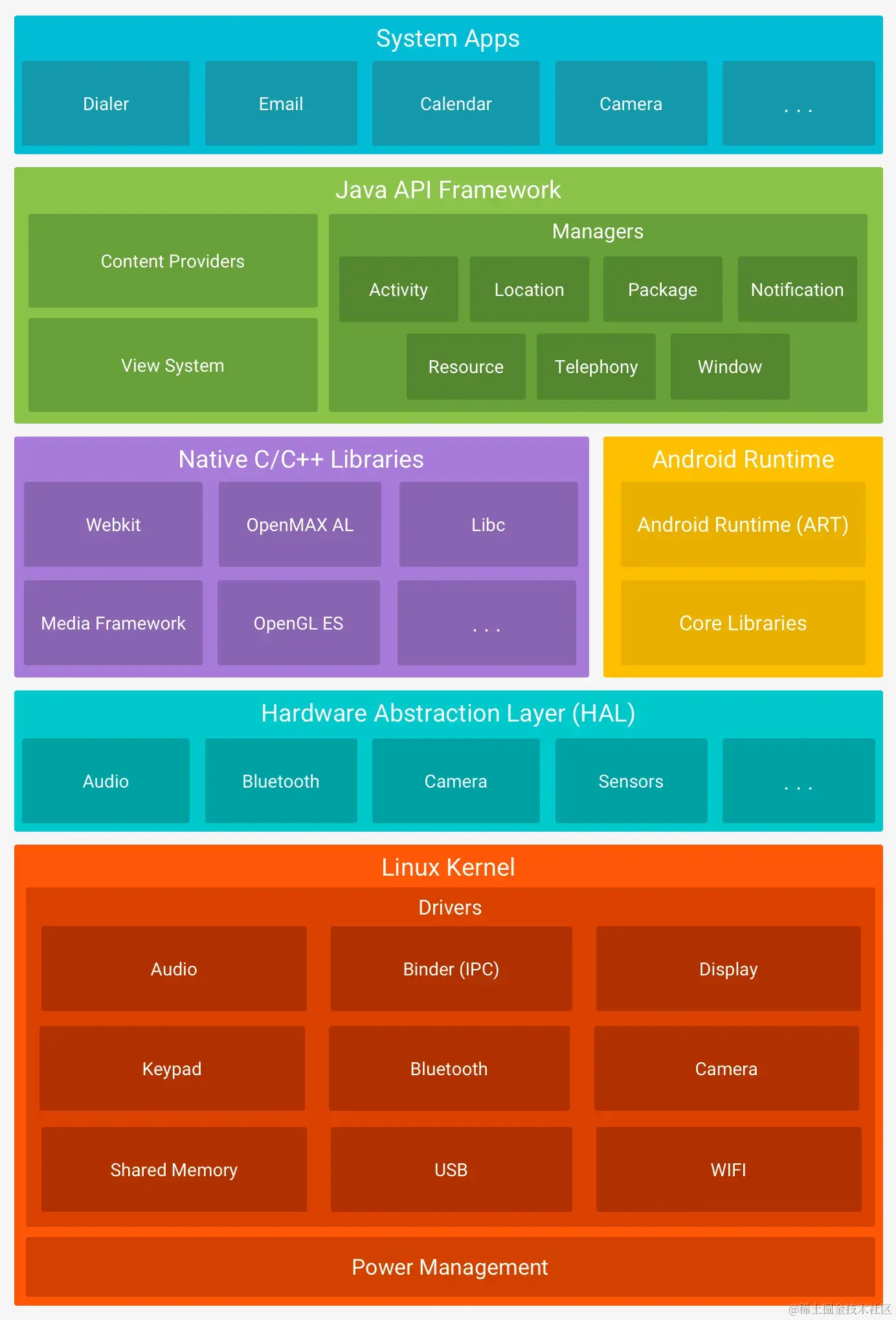The figure above is the overall architecture of Android. Android Runtime is to Android what the heart is to the human body. It is the environment where Android programs are loaded and run. This article mainly focuses on the Android Runtime part and explores the development and current status of Android Runtime. It also introduces the feasibility of using Profile-Guided Optimization (PGO) technology to optimize application launch speed. Evolution of App Runtime JVM Native Android code is written in Java or Kotlin and compiled into .class files by javac or kotlinc. Before Android, these .class files would be input into the JVM for execution. The JVM can be simply divided into three subsystems: Class Loader, Runtime Data Area, and Execution Engine. Among them, the Class Loader is mainly responsible for loading classes, verifying bytecode, linking symbol references, allocating memory for static variables and static methods, and initializing them. Runtime Data is responsible for storing data, divided into method area, heap area, stack area, program counter, and native method stack. The Execution Engine is responsible for executing binary code and garbage collection. In the Execution Engine, Interpreter or JIT execution is used. Interpreter means interpreting the binary code during execution. Interpreting the same binary code each time is wasteful, so hot binary code will be JIT compiled into machine code for faster execution later. DVM (Android 2.1/2.2) JVM is a stack-based runtime environment. Mobile devices have higher requirements for performance and storage space, so Android uses the register-based Dalvik VM. To convert from JVM to DVM, we need to convert .class…
